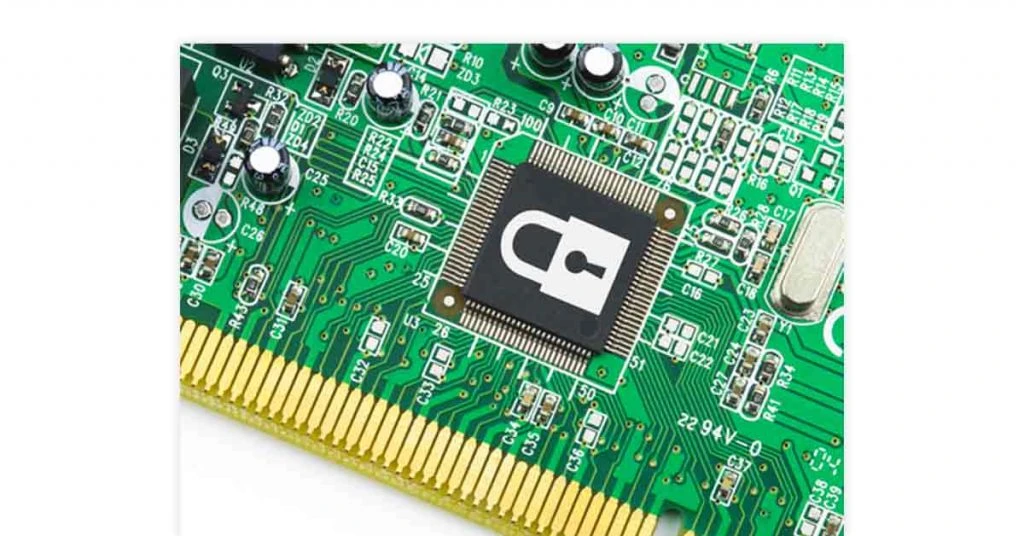What are Hardware Security Modules (HSM)? Why use and How its Works?

Today, businesses collect and store sensitive data of customers like credit card information, banking details, health records, etc. The misuse of these hypersensitive data could lead to a digital doomsday. This information about customers is often stored in devices and on servers.
Sometimes, even the encrypted data are leaked because the private key gets stolen or hacked. This is the reason why companies need Hardware Security Modules (HSM) to make data invulnerable to leaks or tampering.
Ensuring data security has gone far beyond complying with government regulation. It’s now the key to success and even a robust marketing strategy for many companies.
For example, WhatsApp received huge backlash when it changed its privacy policy in January 2021. Data security has become more critical for IT company’s survival than anything else.
What Are Hardware Security Modules (HSM)?
Hardware Security Module (HSM) is a cryptographic hardware system designed to perform encryption and decryption operations in a highly secured environment.
It acts as an invaluable resource for performing all sorts of cryptographic operations without exposing them on a network vulnerable to hacking attempts by malware or other malicious software programs. HSM could be a dedicated hardware system, inbuilt hardware, or just a plugin device.
HSM has repeatedly proven its ability to secure and manage digital keys, digital signatures, and other encrypted documents. It performs encryption and decryption of documents to ensure the highest level of confidentiality and protection.
The hardware security module (HSM) is widely used in banking and other industries for securing information like healthcare records and credit card numbers. The hardware security modules price depends on the requirements of an organization. In a time period in which Digital Signature Software verifies several hundred eSignatures, HMS could authenticate hundreds and thousands of it.
Why Should You Use A Hardware Security Module (HSM)?

HSM is an isolated cryptographic engine that can secure, generate, and manage cryptographic keys for various purposes. The use of HSMs is virtually unlimited, depending on the needs and scale of operation. Hardware security module in an organization can be used to:
- Protect hardware devices from unauthorized access or penetration attacks
- Reduce the number of security incidents related to lost or stolen tokens
- Ensure regulatory compliance related to data security like HIPAA, eIDAS, UIDAI, etc.
- Separate cryptographic functions from regular operations
- Authorize and authenticate the critical cryptographic transfer
- Ensure the protection of cryptographic keys
- Permanently delete private keys to ensure non-recovery
The HSMs can be used to secure data that is beyond your premise. HSM generated certificates can help in Remote device authentication. HSM generated keys are best to be used to secure data in cloud. These keys can be securely transferred to cloud (eg: Azure, AWS, GCP) and can be used with security applications.
Suggested Read: Six Smart Ways to Protect Data from Falling into Wrong Hands
How Do Hardware Security Modules Work?
HSMs are systems or devices which store and protect cryptographic keys. It is designed to securely generate, use, store, or receive digital keys. However, we have tried to explain the functioning of HSM in simple terms.
- Random Key Generation: The HSM delivers certified random number generation. As the generation does not follow any pattern, dealing with large number of keys is safe like session keys, public keys etc.
- Stores the Keys: HSM safely stores many keys internally and uses it whenever required to encrypt messages sent over the network. Since no third party can access this information, safety is guaranteed.
- Installation of a Private Key: Protects the key inside the secure boundary of device. This makes sure that data encryption and decryption require with same cluster of device.
- Encrypting the Data: The plaintext input is encrypted using a symmetric key at both ends. The recipient uses decryption similarly.
- Master Encryption Key Management: The HSM can manage Master encryption Key for various DB encryption, Identity and Access management software, firewalls and ADCs and hence forms a root of trust.
What Does a Hardware Security Module Do?

With the rise in cyberattacks and data breaches, protecting your sensitive information is more critical than ever. Hardware Security Module does the following to ensure a higher level of security:
- Generates protects and manages private key including Root CA Key for PKI implementation
- Supports certified implementations of leading data encryption algorithms like RSA, ECC, AES etc.
- Provides functions to securely generate the certificate revocation list (CRL)
- Authenticates users and devices through digital certificates generated securely using HSMs
- Generates, manages and deletes the keys needed for the cryptography process
- Protects cryptographic keys and handles encryption and decryption processes
- Helps organizations to meet existing and emerging regulatory compliances like UIDAI, CCA, HIPAA, eIDAS, GDPR etc.
What is Entrust Hardware Security Module?
Entrust Hardware Security Module is a cryptographic system developed to secure data, processes, systems, encryption keys, and more with highly assured hardware.
Entrust HSM goes beyond protecting data and ensures high-level security of emerging technologies like digital payment, IoT, blockchain, and more. Entrust provides one of the best hardware security modules in the market.
Entrust HSM ensures higher control through a secured cloud network. It is a comprehensive hardware security module that helps organizations meet every regulatory data security compliance and embrace secured digital transformation.
Benefits of Entrust HSM
Entrust is a comprehensive and hyper-secure data security solution provider. Here are a few benefits of Entrust HSM:
- Secure Key Management: Protecting the private keys is critical for securing data from breaches. Entrust HSM securely generates, stores, and manages all cryptographic keys.
- High Performance with Low Latency: It offers high-speed cryptographic technology for higher performance with low latency.
- Security and Compliance: Entrust HSM provides the highest level of security and compliance with both internal and regulatory compliance. It keeps you up to date with all government compliances like GDPR, HIPAA, PCI DSS, etc.
- Secure Remote Access: This allows you to access the keys even when the device is not on your site. You can securely modify or delete keys without ever visiting the physical hardware module.
- Flexible and Scalable: Entrust HSM could store unlimited private keys. Entrust’s cloud-based HSM is one of the most flexible HSM solutions in the market.
Try It Now: Book Entrust HSM Demo For Free To Avail Best Deals Now!
HSM Use Cases
Here are some successful examples of hardware security modules implementation.
Use Case 1: Protecting Private Key
Problem: Digital signatures rely on encryption and decryption through private and public keys for identity verification. In case a private key of an organization or individual is hacked, it defies the whole digital signature concept.
Solution: The HSM module stores all the private keys in a highly secured, tamper-free environment. It generates truly random session keys, manages them, and permanently deletes them once their purpose is over.
Use Cases 2: Offloading Workload from Web Servers
Problem: Web servers and their clients use SSL or TLS to establish a secure connection. In this process, the web server’s identity is confirmed through public-private key pairs that are mathematically encrypted together. This requires a lot of processing which makes the web servers slow.
Solution: HSM could be used to offload some of the computation on cloud clusters. It reduces the processing need of webservers and adds an extra layer of security by storing the server’s private key.
Use Case 3: Mobile Device Management for Remote Devices
Problem: It was challenging to create trusted certificate provisioning to access remote employees’ networks. The work from home and BYOD culture resulted in severe security issues.
Solution: HSM creates unique identities of devices and issues keys and certificates by PKI even on the cloud. HSM leverages transparent and secures mobile device management to ensure secured access. The simple device enrolment process can manage and confirm the identities of all the employee’s devices.
Faq’s
What are the critical HSM features?
HSM ensures a tamper-resistant environment for key generation, storage, and management. It has features like algorithm agility, cryptographic accelerator, logical segregation of keys, Split control, Multifactor authentication and standard crypto APIs compatibility.
How are HSMs used?
In general, HSM manages cryptographic keys and provides those keys to trusted applications or devices. Keys can be used to protect data using encryption, digital signature based applications, Master encryption Key management and uploading Keys securely to Cloud based data vaults.
What are cloud HSMs?
Cloud based HSMs are devices that can be provisioned and used through remote data centre. These HSMs are located at secure data centres but now can be fully administered from anywhere around the world securely using Remote administration. These HSMs can integrate with cloud services or on premise applications to offer greater flexibility for hosting keys onsite or remotely.
What is the difference between Cloud HSMs vs on-premise HSMs?
1. On-premise HSMs are in physical custody of the customer while Cloud HSMs are plugged in remote datacentres. However both HSMs can be fully administered by customer. Remote HSM can be optionally managed by service provider.
2. Cloud-based HSM is a subscription based model whereas on-prem is a perpetual model.
3. Cloud-based HSM is easily scalable and more flexible than on-premise HSM.
Rajan is pursuing CA with a keen interest in trends and technologies for taxation, payroll compliances, Tally Accounting, and financial nuances. He is an expert in FinTech solutions and loves writing about the vast scope of this field and how it can transform the way individuals and businesses... Read more

















